Summary of Climate Disasters on the Planet from September 18 to September 24, 2024
South Africa and Lesotho
Starting on September 20, the southern regions of Africa were hit by a rare snowstorm, causing chaos on the roads. South Africa’s border control authority closed three border crossings with Lesotho.
In some areas of Lesotho and South Africa, snowdrifts reached 2 meters (6.6 feet) high, far exceeding the typical levels, even for the middle of winter. The provinces of Eastern Cape, KwaZulu-Natal, Free State, and Gauteng in South Africa were particularly affected.
Snowdrifts paralyzed traffic, including N3 highway between Johannesburg and Durban—one of South Africa’s major transport arteries.
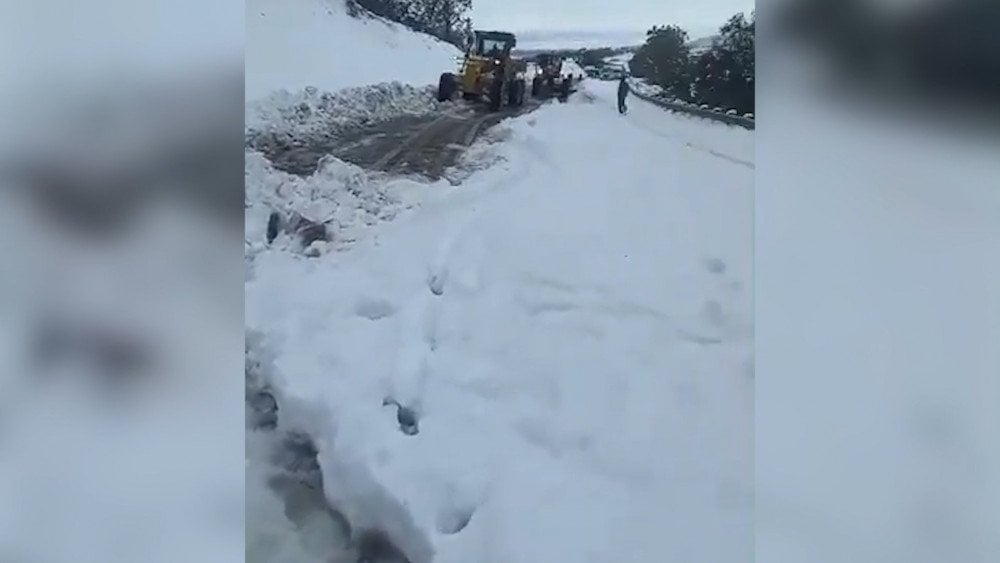
Snowdrifts paralyzed traffic on one of South Africa’s major transport routes
Many drivers spent the night in their cars without food or water, waiting for rescue, with some remaining trapped in the snow for more than 24 hours. One person died from hypothermia.
In Lesotho’s capital, Maseru, children were stuck in schools for several days.
Snowfalls in South Africa usually occur only in winter and in mountainous regions, and they are typically not heavy enough to cause serious aftermath. This snowstorm, however, was unusually late and abnormally strong, surpassing even mid-winter norms (from June to August in the Southern Hemisphere), leading meteorologists to classify it as extreme.
Residents of other countries also unexpectedly found themselves trapped in snow, facing anomalously cold weather.
Argentina
In Argentina, on September 22, a sudden spring snowstorm in the Andes led to the closure of the Cristo Redentor—Los Libertadores international tunnel. 7,000 tourists, who had come to Argentina for the weekend, were stranded in the province of Mendoza.
Freight traffic was disrupted, with thousands of trucks waiting at service stations to deliver goods to Pacific ports.
Heavy snowfalls also hit the provinces of Neuquén and Río Negro. Unusual snowfall led to the closure of several mountain passes in the south of the country, including the Pino Hachado international pass, leaving around 150 trucks stranded in the city of Las Lajas, unable to reach neighboring Chile.

Sudden spring snowstorm in the Andes, Argentina
Mongolia
An unusually early onset of winter was observed in Mongolia. Early frosts affected residents in the northern, western, and central provinces.
On September 18, some regions saw up to 7 cm (2.8 inches) of snow, and temperatures dropped to -5°C (23°F).

Unusually early onset of winter in Mongolia
Nomadic herders and farmers were particularly affected. Unexpected frosts threatened the harvest and vegetable reserves.
Temperature anomalies
At the same time, anomalously high temperatures were recorded across most of the planet.
Almost every country experienced record-breaking heat in September this year.
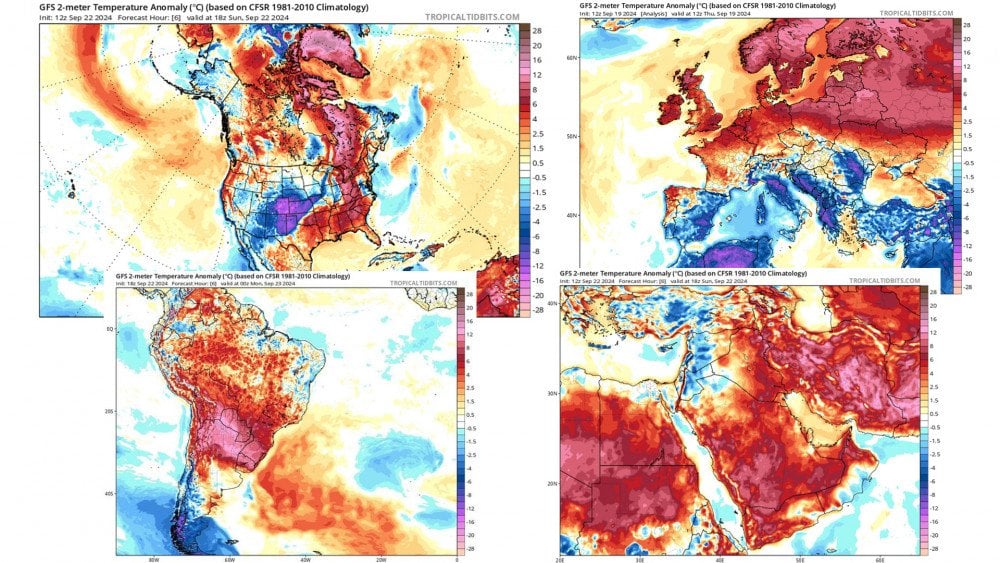
Maps show temperature deviations from the norm across different regions
It was anomalously warm in Canada. On September 22, in the village of Clyde River, located in the northern province of Nunavut, a new September record of +16.5°C (61.7°F) was set. Usually, the maximum temperature at this time of year does not exceed +2°C (35.6°F).
Extreme heat also gripped several South American countries: Bolivia, Argentina, Paraguay, and Brazil, where September marks the beginning of spring.
On September 22, the temperature in the city of Villa Montes, Bolivia, soared to +45°C (113°F), which was 12.5 degrees above the climate norm.
Brazil recorded the highest minimum temperature for the Southern Hemisphere in September. On September 23, the temperature in the city of Cuiabá did not drop below +30.9°C (87.6°F).
In Iran, on September 23, in the city of Kahnuj, located at an altitude of 500 m (1,640 feet) above sea level, the air temperature reached +47°C (116.6°F), setting a world record for this altitude.
That same day, almost 100% of the stations in Bangladesh, Nepal, and northeastern India shattered their heat records by a large margin. For example, in Janakpur, Nepal, +40.5°C (104.9°F) was recorded, and in Dibrugarh, India, +39.5°C (103.1°F).
In Europe, there were stark contrasts in temperature: record heat in Northern Europe and abnormal cold in Italy and the Balkan Peninsula.
Typhoon Pulasan
On September 19, Typhoon Pulasan hit China, making landfall twice. First, it struck Daishan County in the Zhoushan Prefecture, Zhejiang Province, and then Fengxian District in Shanghai.
In just six hours, more than 300 mm (11.8 inches) of rain fell,
breaking the historical record for the region.

Flooded street in Shanghai, China
A large part of the metropolis was submerged, and residents had to move around on makeshift rafts. Pulasan triggered a multi-vortex tornado in the Qingpu District of Shanghai.
As of September 20, around 112,000 people had been evacuated in the region, and train and ferry services were suspended. Nearly 650 ships were diverted to safe locations.
It is noteworthy that typhoons typically make landfall much farther south of Shanghai, but within just one week, two typhoons hit the metropolis: Typhoon Bebinca on September 16, followed by Pulasan just days later.
Although Typhoon Pulasan weakened to a tropical storm, it brought heavy rains and tragic aftermath to South Korea and Japan.
On September 21,
223.8 mm (8.8 inches) of rain fell overnight
in Busan, South Korea’s second-largest city.
Residential areas were flooded, and hundreds of people were evacuated.
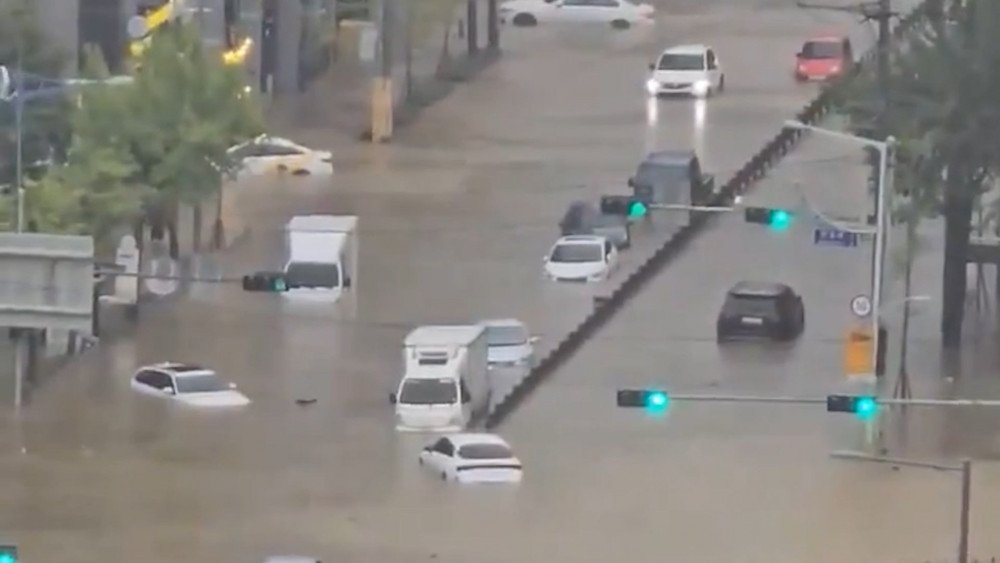
Heavy precipitation submerged streets in South Korea
Besides floods, a massive sinkhole opened in the Sasang District of Busan. A large sinkhole, measuring 10 meters long (33 feet), 5 meters wide (16 feet), and 8 meters deep (26 feet), opened on a road in Sasang District and trapped two trucks.
On September 21, 16 rivers in the Ishikawa Prefecture, Japan, overflowed, flooding many homes.
In Wajima City,
more than 120 mm (4.7 inches) of rain fell in just one hour.
Within 24 hours, rainfall records were set in Wajima with 354 mm (13.9 inches) and in Suzu with 258 mm (10.2 inches).
Such downpours had never been seen in this region before.

Record rains caused flooding in Ishikawa Prefecture, Japan
As of September 22, more than 2,000 people were forced to evacuate.
High-speed train services were temporarily suspended between Yamagata and Shinjō stations.
On the Noto Peninsula, more than 60 landslides and mudflows occurred. In Suzu, many houses were buried under soil and rocks. On September 21, the flooded river in Wajima washed away several houses, leaving only their foundations.
Many roads were destroyed or blocked, and bridges were swept away by the floods. As a result, 115 villages around Wajima, Suzu, and Noto were isolated.
More than 5,060 households were left without water, and the electricity supply was disrupted.
As of September 23, seven people were confirmed dead, and two were missing.
This flood became a new disaster for people who had lost their homes due to the earthquake on the Noto Peninsula on January 1, 2024.
According to the Ishikawa Prefecture authorities, as of September 22, temporary houses in nine areas of Suzu and Wajima were affected by the flood.
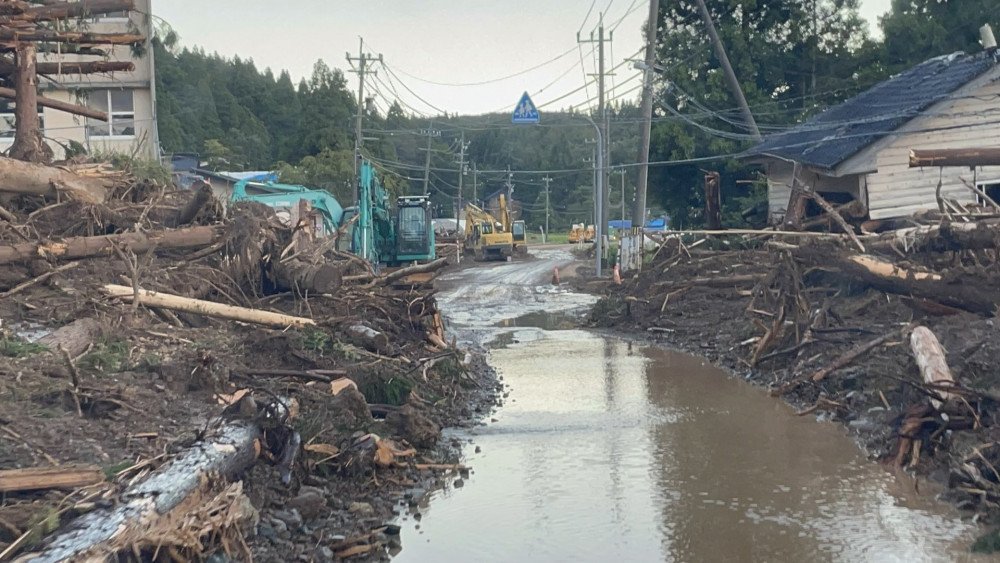
In Wajima, the overflowing river damaged homes and infrastructure, Japan
Nine months later, construction of temporary housing is still ongoing, and the flooding is making the already built homes uninhabitable. An 80-year-old woman said that after surviving the earthquake, she had spent several months sleeping on mats in a gym and had only recently returned to a normal bed, but now everything is flooded with dirty water. People may once again spend the winter cramped in cars or gyms.
Sinkholes
Concern is growing in South Korea as sinkholes and soil collapses occur across the country. According to the Homeland Safety Management Agency, from January 2, 2018, to August 29, 2024, the country has experienced 1,365 such incidents, resulting in the deaths of two people and injuries to over 60.
On September 19, near the village of Melkhituy, Nukutsky District, Irkutsk Region, Russia,
a harvester fell into a massive sinkhole.
Unfortunately, the driver died on the spot.
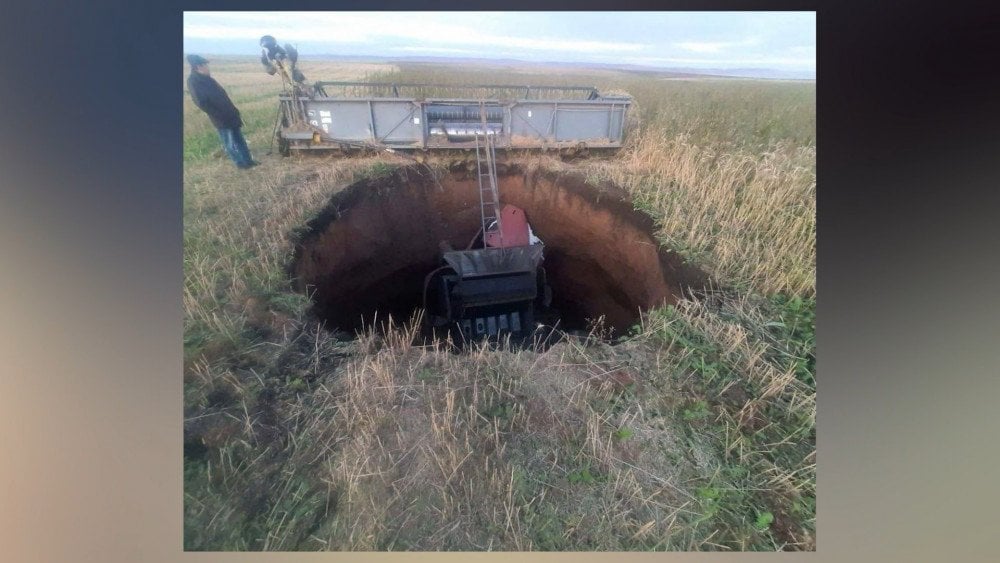
A huge sinkhole swallowed a harvester near the village of Melkhituy, Russia
On September 20, a massive sinkhole opened in the Chachapa Industrial Park, municipality of Amozoc, Puebla State, Mexico, swallowing the trailer of a truck and leaving its front wheels and the driver’s cabin hanging in the air.
This was the fourth sinkhole to open in the country that week.
In the historic center of Irapuato, Guanajuato State, a sidewalk collapsed,
and a van with a family inside, along with a truck delivering Coca-Cola, fell into the hole.
Four people sustained minor injuries.

In Irapuato, two vehicles fell into a sinkhole, Mexico
Two more sinkholes were reported to open in the capital, Mexico City, and in Tlaquepaque, Jalisco State.
Sinkholes are also becoming more frequent in Turkey, particularly affecting the agricultural province of Konya.
This is not a new phenomenon for the region, but the recent increase in the number of sinkholes has alarmed local residents.
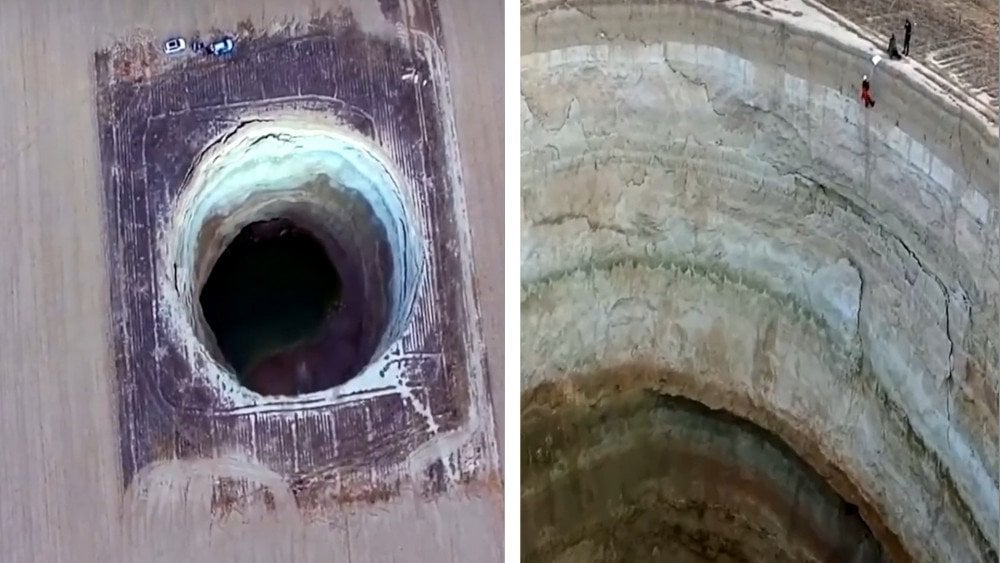
Giant sinkholes in Turkey
According to Turkey’s Disaster Management Authority, over 2,700 surface deformations and non-seismic cracks were identified just this summer, indicating a risk of new sinkholes forming.
France
On September 23, a series of powerful storms hit France, bringing torrential rains and floods. The city of Cannes was the most.
The intensity of the rainfall was catastrophic:
37.7 mm (1.48 inches) of rain fell in just 21 minutes.

Flooding in the streets of Cannes, France
Water rushed down the streets, sweeping away cars and wreaking havoc.
Italy
Just days after Storm Boris flooded Central Europe, on September 18, it reached northeastern Italy.
Many cities were submerged, and about 1,500 residents were evacuated, with two people reported missing.
The town of Falconara, in the Marche region, experienced an anomalous downpour—204 mm (8 inches) of rain fell in two days, which is three times the average amount for September (the monthly norm is 64 mm or 2.5 inches).
In the mountainous areas of the Apennines, more than 300 mm (11.8 inches) of rain fell, causing numerous landslides and road closures.
The Emilia-Romagna region was hit the hardest. In the city of Ravenna, schools, libraries, and parks were closed, and the University of Bologna canceled exams and classes.
Roads across the region were damaged, and train services were severely disrupted.

Due to heavy rains, the streets of Ravenna, Italy, were submerged
In the city of Faenza, rivers rapidly rose, flooding the city. Many residents were forced to hastily evacuate from their homes by boat in the middle of the night.
This is already the third major flood in Emilia-Romagna in the last 16 months. People are desperate: not having fully recovered from the deadly flood in May of last year, they find themselves once again at the center of a disaster. Repaired and freshly painted houses have once again been submerged in dirty water.
Looking at the events happening today, even the most oblivious can now see that the world is on the brink. The paradox, however, is that even after enduring a disaster—like, for example, in Emilia-Romagna, Italy—people rebuild their homes and continue living as before, under the illusion that the worst is left behind. But then a new catastrophe strikes—and the same cycle repeats. It seems that people will start to realize that only when storms will be hitting them one after another before they have time to clean up the aftermath. Or when disasters will come in combinations, like in Japan, when an earthquake occurs, and before the homes are restored, they are destroyed again, this time by a flood. When such situations start escalating more rapidly across the world, that’s when the understanding will come that something needs to be done. But by then, it might already be too late. When people are focused on mere survival, there will be no one left to solve the problem of saving the planet.
Right now, we still have a chance: we have scientists who can solve the climate problem, research institutes, laboratories, technology, the Internet, and most of what is needed to save humanity.
Everyone who has even a shred of intellect and a drop of humanity must grasp the problem and do everything to create public demand for the unification of scientific potential to eliminate the climate threat, and to unite all of humanity around highest value—the life of every person.
The video version of this article is here:
Leave a comment